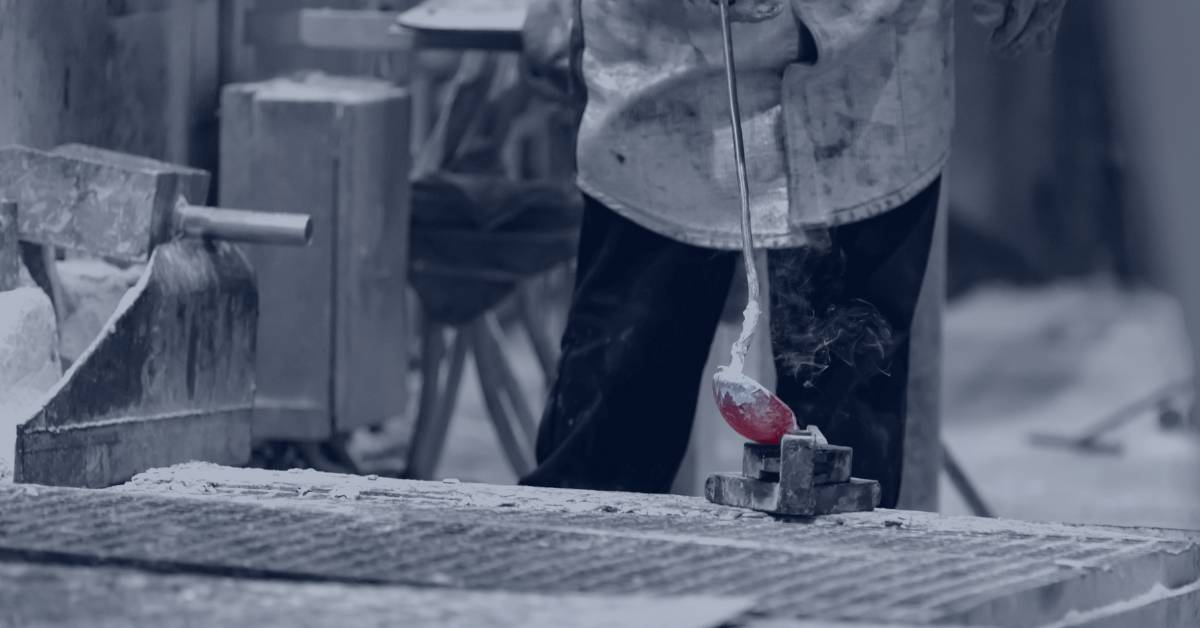Aluminum Castings Company Things To Know Before You Buy
Table of ContentsExcitement About Aluminum Castings CompanyIndicators on Aluminum Castings Company You Need To KnowAluminum Castings Company Can Be Fun For EveryoneThe Ultimate Guide To Aluminum Castings CompanyNot known Details About Aluminum Castings Company Everything about Aluminum Castings CompanyOur Aluminum Castings Company StatementsThe Main Principles Of Aluminum Castings Company
There are two main kinds of die casting utilized in the light weight aluminum casting sector: warm chamber pass away casting and cool chamber pass away spreading. The main difference between these approaches is how the molten metal is provided to the mold and mildew. In hot chamber die casting, generally used for lower melting point metals, the fusion is directly attached to the machine, and a plunger compels the product via a gooseneck right into the die cavity.
Aluminum Castings Company - An Overview
In these methods, the mold is purposefully ruined or escaped in order to draw out the finished light weight aluminum spreading. Common procedures under the group of expendable mold casting include (investment casting),,, and financial investment casting. When manufacturing customized light weight aluminum components making use of expendable molds, manufacturers pour liquified aluminum or light weight aluminum alloys into the mold, which is then busted apart to release the solidified steel part.
The is just one of the earliest and most favored forms of aluminum spreading. It entails compacting specialized shop sand, frequently strengthened with clay or material, around a specifically crafted reusable pattern that figures out the form and inner details of the finished light weight aluminum item. The pattern system integrates risers and vents to take care of the flow of molten steel and to avoid casting defects such as shrinking porosity.
Aluminum Castings Company Fundamentals Explained

This mold is then preheated previous to the pouring of molten aluminum or aluminum alloy. As the metal loads the covering, it captures the detailed details and great surface finish of the mold and mildew. Once cooled down, the ceramic is mechanically or chemically broken away, allowing for the elimination and splitting up of individual cast components.
Unknown Facts About Aluminum Castings Company
Irreversible mold and mildew spreading makes use of reusable steel mold and mildews and is optimal for automation with constant quality and less waste. Expendable mold spreading makes use of single-use mold and mildews, like sand or foam, using style versatility and reduced tooling prices for prototypes or short runs. Pass away casting is best for creating high quantities of light weight aluminum components that require limited resistances, great details, and smooth surface areas.
The Toshiba Maker DC-J Collection includes die casting equipments ideal for light weight aluminum. Known for their durable building and high injection performance, these devices guarantee reliable and accurate casting (Aluminum why not look here Castings Company).

While light weight aluminum can be used in its pure kind, it is usually alloyed with various other metals to enhance its properties or the residential or commercial properties of the other metals. These alloys offer enhanced efficiency for various applications. Light weight aluminum alloys are classified right into eight series, numbered from one to 8. The initial digit(s) of the number show the key alloying element incorporated with aluminum.
Aluminum Castings Company Can Be Fun For Anyone
This alloying improves the toughness and solidity of aluminum yet lowers its ductility and rust resistance. The 3000 collection alloys are largely alloyed with manganese.
The 4000 collection alloys are alloyed with silicon, which lowers the melting factor and enhances fluidity. This makes it a popular option for spreading, as it is easy to create in its liquified state.
Aluminum Castings Company Things To Know Before You Buy
This series is categorized as a high-strength alloy, especially fit for sheet and plate applications because of its superb weldability. Its resistance to corrosion from acids and antacid makes it suitable for usage in extreme and hostile environments (Metal Foundry). The 6000 collection alloys are alloyed with both magnesium and silicon, supplying a balance of strength, mechanical properties, and deterioration resistance
Processing the 6000 collection requires specialized and sophisticated tools, which can be complicated and pricey. Nevertheless, this series is recognized for its outstanding rust and oxidation resistance, as well as its ease of finishing, therapy, and workability. The 7000 collection aluminum alloys are the strongest and most sturdy amongst aluminum types, with strength equivalent to about two-thirds of industrial-grade A3 steel.
Fascination About Aluminum Castings Company
Zinc is the main alloying element in the 7000 series, enhancing the hardness of the aluminum, despite the fact that zinc's hardness resembles that of aluminum on the Mohs range. The 8000 series aluminum alloys are primarily alloyed with tin, together with percentages of copper and nickel (Aluminum Melting and Casting). While these alloys supply reduced stamina compared to various other series, they master machinability and wear resistance
Aluminum cast heatsinks are electrically conductive, allowing them to be grounded properly. They are commonly cast with integrated attributes that reduce the need for additional procedures, such as extra machining or setting up, leading to additional price financial savings. Aluminum spreading is regularly used to produce brackets for both heavy-duty industrial equipment and home appliances.
Rumored Buzz on Aluminum Castings Company
The single-piece building and construction of aluminum braces enhances their strength and sturdiness, decreasing the likelihood of failure. If openings are required, they can be consisted of directly in the spreading mold, lessening the need for post-production finishing (https://www.provenexpert.com/aluminum-castings-company/). Manufacturers have increasingly embraced light weight aluminum spreading for golf devices because of its sturdiness, security, and convenience in shaping